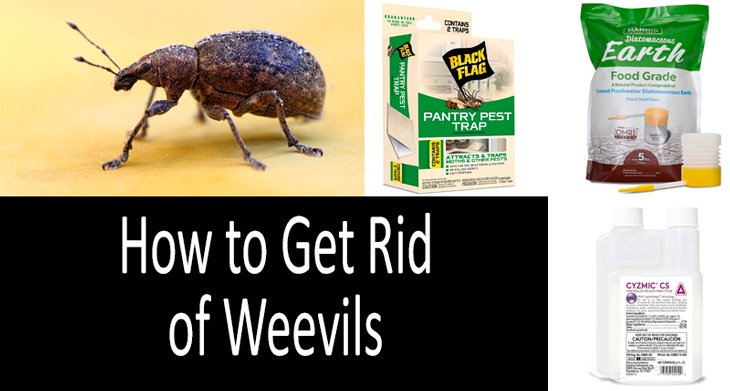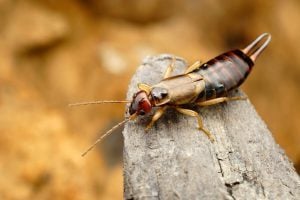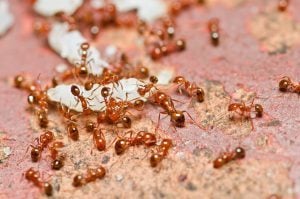How to get rid of weevils? Prevention is the best way to keep a weevil infestation from occurring. This guide provides useful advice on what food to buy and how to prepare and store it to prevent weevils from invading your house. If weevils have already infested your kitchen or garden, there are several options of weevil control you can use: sticky traps + diatomaceous earth + chemical insecticides.
|
1. Black Flag 100534416 Pantry Pest Trap |
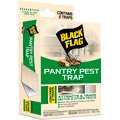 Check the current price |
|
2. HARRIS Diatomaceous Earth Food Grade |
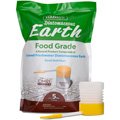 Check the current price |
|
3. Control Solutions – 82002401 – Cyzmic CS |
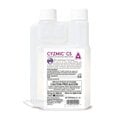 Check the current price |
How to Get Rid of Weevils In Pantry
Thought to be native to Central Mexico, the weevil migrated northwards to the United States sometime in the late 19th century. Within just twenty years, weevils infested nearly every cotton-growing area in the country.
Although weevils don’t produce nearly as much economic disruption nowadays, they are still a frustrating pest common to the South. Below, we’ll jump into the best ways to keep weevils from wreaking havoc on your property.
Steps to Prevent Weevils From Invading Your Pantry
The best way to prevent a pantry weevil infestation is to be very cautious with the food you buy, prepare, and store. As always, prevention is often the best way to keep an infestation from occurring.
- First, you should learn to identify what weevils look like. At about 1/8 inch long, weevils range in color from dull brown to shiny red-brown. Weevils are easily recognizable by their light-colored dots on their body and elongated snouts.
- When stocking your pantry, try to buy grains, cereals, and oatmeals in bulk. Shop locally so that you can inspect the food itself before purchase. Weevils are particularly attracted to flour, rice, quinoa, barley, oats, and corn.
- Alternatively, look for grains in clear packaging so that you can inspect the contents. Always avoid food that comes from damaged packaging; weevils can crawl in through even very small punctures.
- After purchase, if you spot this pest, you can kill weevils by either heat-treating or freezing your bulk grains. Whole grains like rice can be heated in the oven at 140 F for fifteen minutes while powdered grains can be frozen for three days: This will kill weevils before any eggs can hatch.
- We recommend transferring your treated grains to an airtight container that’s not made of paper or plastic.
- Make sure to regularly clean the inside of your pantry to dispose of insect dropping, skin, potential larvae, and remains. The BLACK+DECKER Dustbuster Handheld Vacuum features a slim nozzle that can target weevils nestled in tight corners.
- For a long term solution, try to seal every possible entry point into your pantry. Though weevils are usually introduced through contaminated food, they can also make their way into grain storage through small crevices. Damaged weather stripping around doors, missing caulk, torn screens, and open vents are all common weak points.
Use Insect Traps to Get Rid of Weevils
If you suspect your home is already invested, it’s time to use insect traps. Multi-purpose sticky traps work by attracting various pests to certain stimuli, which can differ based on the product.
For the pantry, always make sure to buy a product that’s certified safe around foodstuff. The Black Flag 100534416 Pantry Pest Trap contains human-safe attractant that draws in all types of pests.
Once weevils get attracted to the trap, they quickly find it impossible to escape. After three months of use, replace with a fresh trap; however, you can replace them as often as necessary after they get full.
Pantry traps can also give you a good idea of what pest infestation you are currently suffering from. You can identify sub-types of weevils by their coloration, size, and snout type after they have been trapped.
{code 1210}
How to Get Rid of Weevils in the Garden
Weevils aren’t just unwanted indoors, they can cause serious damage to garden plants, crops, and lawns.
Kill Weevils With Diatomaceous Earth
If you have ever suffered from an infestation, you’ve probably heard of diatomaceous earth. Diatomaceous earth – or DE, for short – has been described as the “bug killer you can eat”.
DE is simply a naturally occurring, soft sedimentary rock that crumbles into a fine white powder. It is one of the most effective solutions when fighting against all form of grain-eating or garden-chewing pest.
One study found that lawns treated with DE saw a 70 to 80 percent reduction in weevil population as compared to untreated lawns.
DE works by scoring the outer layer of the weevil, leaving it defenseless against infection, which later results in death. However, DE on its own may not be enough to suppress the weevil population completely.
Filler and additive-free, the HARRIS Diatomaceous Earth Food Grade, 5lb can easily be powder dusted on any lawn for efficient application. The organic solution is safe for any type of garden and won’t interfere with natural pollinators.
{code 1211}
Keep Weevils Away from Your Plants
Aside from regularly applying DE, there are many effective ways to prevent weevils from spreading throughout your garden.
It’s recommended that you remove mulch and other common “hiding places” built up around plants, since both the larvae and adults prefer moisture and dark areas. You should only water your plants when necessary and avoid creating pockets of moisture in the dirt.
Moreover, weevils found in the US are unable to fly and move from plant to plant by walking. Insect barriers like the Tree Tanglefoot Insect Barrier creates a sticky solution on the roots of plants, preventing many common pests from comprising your plants.
{code 1212}
Get Rid of Weevil Larvae With Nematodes
Nematodes can be an extremely effective solution to recurring outdoors weevil infestations. If you find damage caused by adult root weevils crop up every spring or summer, it may be time to call in these smooth multicellular worms.
Nematodes attack weevils by entering their natural body openings, later releasing a flood of bacteria that causes blood poisoning. The infection quickly stops all larvae from feeding, allowing the entire population to die off.
The Bug Sales 25 Million Live Beneficial Nematodes Hb solution is certified to target over 290 soil-dwelling pests, yet is completely harmless to humans and pets.
{code 1213}
Apply Insecticides to Remove Weevils
There are several common insecticides that work well against entrenched weevil populations. Experts recommend pyrethroid insecticides, such as permethrin, bifenthrin, cyfluthrin, or cyhalothrin-based solutions.
Insecticides are best applied to the lower trunk of the plants and trees so that weevils will die as they start to climb. Most sprays should not be used on flowers or leaves, since these attract pollinators.
You should try to spray late in the day, which is when adult weevils become active. When in doubt, always select a product that specifically states it’s effective against weevils.
Before buying any product, research the particular type of weevil that’s common to your area of the country. Some sprays are not well-suited for root, giraffe, and true weevils.
Insecticide for Indoor Treatment
The Hot Shot Indoor Fogger With Odor Neutralizer creates a fine, dense mist that reaches deeply into cracks and crevices you’d normally miss. Just one round of the Hot Shot keeps killing indoor pest populations for up to two months.
This indoor treatment can be used in any enclosed spaces, such as attics, basements, cabins, garages, or camper vans. Designed to be nearly unnoticeable, the non-staining formula won’t leave any residue on your furniture or countertops.
Before use, make sure to open any cabinets you want treated. Remove exposed food, close windows, turn off the fire alarm, and leave the home during a fogging treatment.
| Pros |
|---|
|
| Cons |
|
{code 1214}
Insecticide for Outdoor Treatment
Made from 9.7 percent lambda cyhalothrin, the Control Solutions – 82002401 – Cyzmic CS – Controlled Release Insecticide is suitable for a variety of indoor and outdoor applications.
Most buyers sprinkle the solution around the perimeter of their property, yet can even be used in food-handling areas. The solution is effective enough to zap weevil, ant, bed bug, and cockroach populations.
| Pros |
|---|
|
| Cons |
|
{code 1214}
Rules for Getting Rid of Weevils Based on Scientific Evidence
Weevils can be incredibly pernicious, frustrating pests to try and control. By the time you’ve noticed a single weevil, it’s likely they’ve already started to infest your pantry or your garden.
As soon as you notice droppings or other insect remnants, it’s time to create a strategy to control the emerging threat.
Like most pests, experts state that the best way to control weevils is through enacting a multi-pronged approach. Behavioral changes, like treating and storing your food in airtight containers, are best paired with pest-killing treatments like DE or insecticide.
If your property is overrun with several types of weevils or pests, a triadic approach could help to better control the population of diverse types of infestations. Experts recommending sticking to a regular cleaning schedule, applying human-safe insecticide treatments, and sealing any small cracks in your property.
Make sure your treatments are targeted to the areas that weevils are most likely attracted to. Apply outdoor treatment to the lower trunks of trees and plants and the perimeter of your property. Indoors, regularly clean the insides of cabinets and pantries that are storing grains.
Expert Opinion: Viktor Fursov, Institute of Zoology of National Academy of Sciences of Ukraine

Viktor Fursov, Institute of Zoology of the National Academy of Sciences of Ukraine
Viktor Fursov is a senior researcher at the Institute of Zoology of National Academy of Sciences of Ukraine. He studies biology and taxonomy of wasps, in particular egg-parasitoids, and has over 70 scientific publications.
In this video, Dr. Fursov tells how to get rid of weevils naturally.
If you collect beans in your garden, try to put them not all together and not in sealed packages immediately. In September, some weevils will emerge by hatching. So if you put your beans somewhere in the dark place, the majority of weevils will hatch and fly to the light. After that, of course, you will need to close all your seeds and put them in a safe place. You can put them in a freezer, at a temperature minus 5 or minus 10. So all these beetles will die. They will not survive the temperature of minus 5 degrees Fahrenheit.

